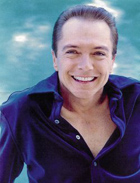
David Cassidy on the Web
Stampede 1980s
June 10, 2012
By Valerie Fortney
Calgary Herald
www.calgaryherald.com
"My job was to stamp an ink tattoo of a cowboy on people as they arrived," says Brookman, who dedicated the next three decades to the Stampede and served as its president from 2007 to 2009. "It was a ton of fun and I got the volunteer bug there and then."
Calgarians and visitors rode the new Light Rail Transit system to the grounds, where the Stampede's Salute to Youth theme focused on the promise and optimism of the younger generation.
Gov. Gen. Ed Schreyer led a scaled-down parade with 450 boy scouts following behind.
At the evening's opening Grandstand Show, Schreyer dedicated the performance to 22-year-old Terry Fox, who had died only a week earlier after cancer halted his one-legged, cross-country run across Canada.
On the Youth Talent stage, the winner of the inaugural event was Gordon Gietz, a Crescent Heights High School student and opera singer. "Opera tenors don't hit their peak until about age 35," said the 17-year-old Gietz, who would go on to perform at such venues as New York's Carnegie Hall. "I've got years yet and I'm going to go for it."
In 1982, the cowboys' lot got even better when the Stampede announced the Half Million Dollar Rodeo, the richest payout ever offered. In this Year of the Cowboy, competitors of past and present came out for a parade led by five of rodeo's best - Larry Mahan, Joe Alexander, Tom Bews, Tom Erickson and Tommy Dorchester. Pop star David Cassidy, football great Terry Bradshaw and Calgary Mayor Ralph Klein were among the VIP parade participants.
All the optimism in the world, though, was no match for a stagnant economy. The challenge facing organizers of the 1983 Stampede was reminiscent of 1923, when Exhibition manager E.L. (Ernie) Richardson fought back against tough times by teaming up with cowboy Guy Weadick, creating the Stampede as we know it.
And just like the early '20s, by the end of Stampede 1983, high attendance was but a faint memory.
American tourists were staying home, while ticket sales at both rodeo and midway dropped. The low numbers translated into a $2-million loss for the board, described by the Herald as putting nothing less than "an unprecedented scare into an organization accustomed to growth and success."
Those on the front lines knew the show must go on. "The recession hit like a ton of bricks," says Brookman, who soon after joined the grandstand committee. "We had to be creative, but there was a new generation of us coming in with a lot of new ideas," he adds.
"There was a tug of war between the old guard and the new guard."
Brookman found a kindred spirit in Bill Avery, who had recently taken over the Grandstand Show from his father Randy, who retired after nearly two decades as producer.
Brookman and Avery weren't afraid to try new things, although not all turned out the way they planned: for instance, the elephant that relieved itself on stage mid-performance; the night when the stage, known as the Queen Mary, came loose; as well as the banner-carrying airplane that flew too close to the crowds, to name but a few.
"We had to come up with ideas that didn't cost a lot of money," says Avery with a chuckle. "We gave everyone a reason to write more rules."
While Brookman and Avery recall those lean years as a magical, creative time, in 1983 not even the appearance of Mickey and Minnie Mouse could reverse the Stampede's downward spiral into the red. In this theme-less year, the Stampede recruited the Disney characters as parade marshals. As they waved their big, whitegloved hands to a crowd of thousands, many observers questioned the choice of animated rodents for the annual homage to the Wild West.
Still, some better-conceived strategies - ones that would pay off in years to come - were put in motion to draw in the cash-strapped populace.
A new Coca-Cola music stage joined the twoyearold Weadickville; a host of other free offerings included the Arete Physical Comedy Troupe that performed "Stampede-style" marriages, good only while on the grounds, along with the World Percheron Congress, held outside Europe for the first time.
Conklin Shows, the longtime midway operator, did its best to attract thrillseekers, bringing in such new rides in 1984 as the Bear Cats adult go-karts and the Gravitron, a bubble-enclosed ride that spun on its side. On that year of Calgary's 100th birthday, however, the crowd paying to hear Joe Carbury call the "chucks" was the smallest in nearly a decade and the million-visitor mark, so assured just a few years earlier, was out of reach.
The 1985 Stampede started off with a bang, but it wasn't exactly good press. On the second day, what some onlookers thought was a staged Wild West shootout broke out in the downtown Bay store.
A shoplifter, subdued after shooting at two security guards, turned out to be none other than notorious American serial killer Charles Ng. A handful of passersby showed their appreciation with hearty applause, not realizing they were witnesses to the end of a global manhunt.
The 1985 price of a barrel of crude was a disturbing $8, yet there was some room for optimism when the newly installed federal Tory government revoked the National Energy Program. Doing its job to provide escapism for 10 days in July, the Stampede hired early 1970s pop star Jim Stafford (My Girl Bill, Spiders and Snakes) to serve as master of ceremonies for the Grandstand Show. On the midway, a star attraction was the Go Wild Supercoaster - a portable roller-coaster that served up a full minute of screaming excitement. At the Palliser Hotel, a new countrypunk singer named k.d. lang caused legendary Herald columnist Catherine Ford to declare, "She has superstar written all over her ripped mustardyellow suit. . . ."
Any longtime Calgarian who has lived through more than one boom-bust cycle knows that what goes down must eventually come back up. That's exactly what happened in 1986, when Calgary and the Stampede was propelled onto the world stage.
Just across the Rockies, Vancouver was playing host to Expo 86. Calgary tourism officials attended, heavily promoting the city's Stampede, Banff National Park and upcoming Olympic Games.
That helped push attendance to 1,029,834 - the best since 1981. Visitors that year took in new rides such as The Explorer and the Octopus, along with the new hit of pig racing.
"We've had nothing but compliments from people who say they got a real bargain," Dan Sullivan, the Stampede's publicity and promotions manager, told the Herald.
The double whammy of Expo in Vancouver and Stampede in Calgary provided a slam-dunk of summer coverage for international media. TV hosts from around the world began a slow but steady exodus here in 1986, so it's unfortunate that summer's rodeo included a spectacular chuckwagon crash resulting in the deaths of six horses. A year later, in 1987, 12 animals had to be euthanized during Stampede due to infield accidents. The incidents, and ensuing international outcry, prompted Stampede officials to formulate new rules and regulations to make future races safer.
Yet what happened in the wake of those crashes took everyone by surprise: a 30 per cent increase in advance ticket sales for the 1988 rodeo. The 1986 chuckwagon incident and its subsequent worldwide coverage, wrote the Calgary Herald, "ironically triggered a surge in popularity of rodeo and grandstand shows."
A spike in sales was also likely due to Calgary now being a place people could find on a map. The international media took an interest in the Stampede after it was promoted at Expo in Vancouver in 1986. Media outlets from around the world converged here in '87.
That year also saw the Stampede mark a milestone - the 75th anniversary of the 1912 Stampede rodeo staged by Weadick. In honour of that, the Trail of '87, consisting of 100 bucking horses with 50 wagons and saddle horses, made its way from the Stampede Ranch near Hanna to Calgary. By the end of the week, 1,001,076 visitors had passed through the turnstiles to take a spin on the Supercoaster or watch the new Superdogs show.
The Olympics continued to sprinkle its gold dust on the 1988 Stampede, with its theme Coming Home.
Come home they did, in a 10-day event that attracted 1,213,636 visitors, smashing records and, thanks to venue rentals and other Olympic revenue, saw the Stampede post an unprecedented $4.4-million profit.
The crowds that came out each day for free performances in Olympic Plaza were a fraction of the numbers who attended Olympic medal presentations a few months earlier, but were just as enthusiastic. Every evening, the Calgary Tower burned brightly for a few hours over a city confident the future could only get brighter. Pin traders hung out at '88 Street, while the daily hoedown in Rope Square attracted upwards of 6,000.
Calgary was definitely back on the upswing.
While the 6,000squarefoot Amazing Maze stymied many a fairgoer at the 1989 Stampede, few doubted the positive direction their city was headed.
"The world demand for Calgary is beyond our wildest expectations," Bob Fleming, the president of the Calgary Tourist and Convention Bureau, told the Herald on July 11, 1989.
That year saw a new casino in the Big Four Building, along with a popular new attraction, Aggie Days, which introduced kids to all things agriculture, and corporate sponsorship amounted to a record $2 million.
The victory of local cowboys like chuckwagon king Buddy Bensmiller and bareback champion Robin Burwash added to local pride. Any further proof of our "best in show" status was the shiny Stanley Cup the Flames had brought home two months earlier.
A few were even willing to roll the dice on transporting this made-in-Calgary show to other parts of Canada. Halfway through the 1989 Calgary Exhibition and Stampede - its total attendance of 1,190,671 second in history only to 1988 - Stampede president Dr.
Bob Church stood with Toronto Mayor Art Eggleton at a news conference to announce a mini-Stampede at Toronto's SkyDome.
The idea was quickly dropped after protests from animal rights activists. Looking back, Church acknowledges it wasn't one of the better ideas.
"It was basically an old-fashioned Wild West show," says Church, who was also working that year on Horizon 2000, a planning document to take the Stampede successfully into the next decade. "But you weren't going to win that argument in Toronto."
Still, many of the ideas and innovations of the 1980s, some borne out of desperation and belt-tightening times, would prove so successful they became Stampede mainstays. What would the 1990s hold? No one knew for sure, other than it was going to be an exciting ride.
